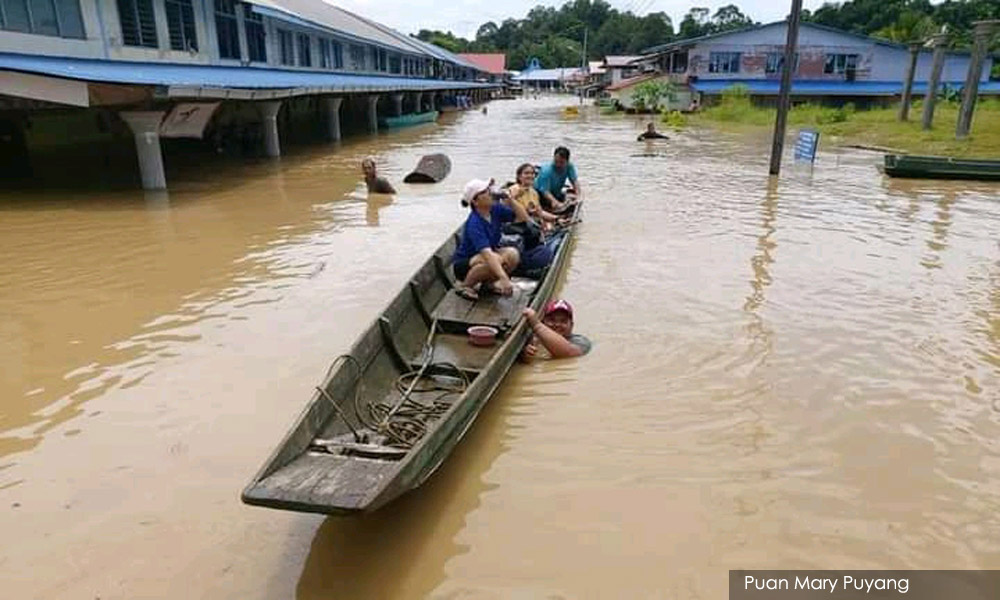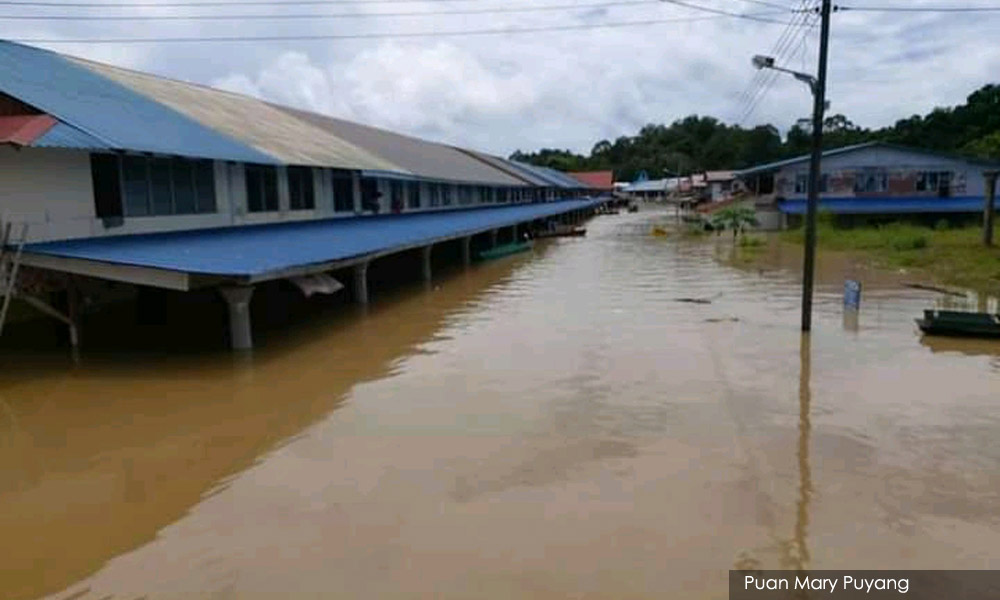LETTER | Sahabat Alam Malaysia (SAM) wishes to express our continued concern on how the occurrences of floods in Sarawak, including in Baram, have become more frequent and intense in recent years. Prior to the large-scale conversion of forests for the purpose of monoculture plantations, such floods were rather uncommon in the upstream areas of interior Sarawak. In all likelihood, they are part of the adverse environmental consequences of deforestation.
From the 1990s onwards, timber production in Sarawak began to decrease gradually as a result of unsustainable logging which began to intensify two decades earlier. Following the depletion in its natural timber resources, permits began to be issued for monoculture plantations, chiefly for the cultivation of pulp and paper trees and oil palm.
It is not surprising that beginning from the 2010s, floodings became more constant and intense in many areas in Sarawak, as reported by data published by Sarawak’s Department of Irrigation and Drainage (DID).

In May, several areas in Baram were once again badly hit by the floods. The affected areas included those in the upstream of Baram such as Mulu, Long Luteng, Long Kawa, Long Ikang, Long Seridan, Long Panai, Long Iman, Long Bemang, and all the way downstream to areas such as Long Lama, Long Laput and Kampung Cina in the Marudi district.
Some of these areas such as Long Laput had also been flooded earlier during this year. The intensity of the floods in May was said to be the worst with an inundation of six feet, according to reports from the villagers. In fact, Borneo Post on May 20 reported that some areas in Baram were hit with 10 feet of water.
During this flooding, a series of property destruction also happened, including the collapse of the Tutoh bridge. Strong currents had swept away the bridge, cutting off people in upper Baram from the outside world.
Meanwhile, MASwings had to reportedly cancel 30 flights for three days from May 20 onwards, when Lawas River overflowed onto the runway. Then, the power station in Mulu had to be temporarily shut down as it was submerged in water.
Additionally, several schools were also affected by the floods. Basically, the affected schools were unable to operate - a social cost that is a burden on students and teachers.
Borneo Post on May 20 stated that the main pathway to Sekolah Kebangsaan Long Luteng, a suspension bridge, was washed away by strong currents. The school was reportedly inundated by water as deep as six feet, affecting even the staff's living quarters, resulting in the staff themselves having to seek refuge in the staff room within the school building. The same report also described how the staff of Sekolah Kebangsaan Penghulu Baya Mallang had to move the schools’ properties to higher ground as the flood inundation reached three feet high.
Typically, communities are the ones that are most affected by these disastrous events. On Feb 5, Malay Mail reported a statement by the Sarawak State Disaster Management Committee that 18 temporary evacuation centres in Kuching and its surrounding districts had to accommodate 1,056 flood victims. In the Miri division alone, on May 23, a total of 10 evacuation centres had to be opened.

More recently, the Borneo Post on June 14 reported that the Mountain and Cave Search Rescue team had to team up with the local villagers to clear the logs that had been swept away during the floods in May. In the same report, the Miri Fire and Rescue Department also said that the logs may pose a danger to Baram River users and their boats.
These events all showed how costly such floods can be for the economy as well as for communities. They even have adverse impacts on our education and other social sectors. Can rural Sarawak withstand such events repeatedly every year? All these show how important it is for Sarawak to halt further forest conversions and take the correct steps to manage the situation, especially in the advent of climate change.
Therefore, we echo the call by Roland Engan, a lawyer from Baram, for the Sarawak state government to study the causes of the floods in several areas in Baram and develop a plan to resolve or mitigate them.
Equally important, it is imperative for Sarawak to preserve the remaining forests that it still has and rehabilitate those that have been degraded by logging and other human activities.
It is important for the government from both federal and state levels to understand and give attention to the connection between forest conversions and the rise in flooding incidents in Sarawak. In the face of climate change, the failure to do so will mean the worst is yet to come.
JOK JAU EVONG is Sahabat Alam Malaysia Sarawak coordinator.
The views expressed here are those of the author/contributor and do not necessarily represent the views of Malaysiakini.

